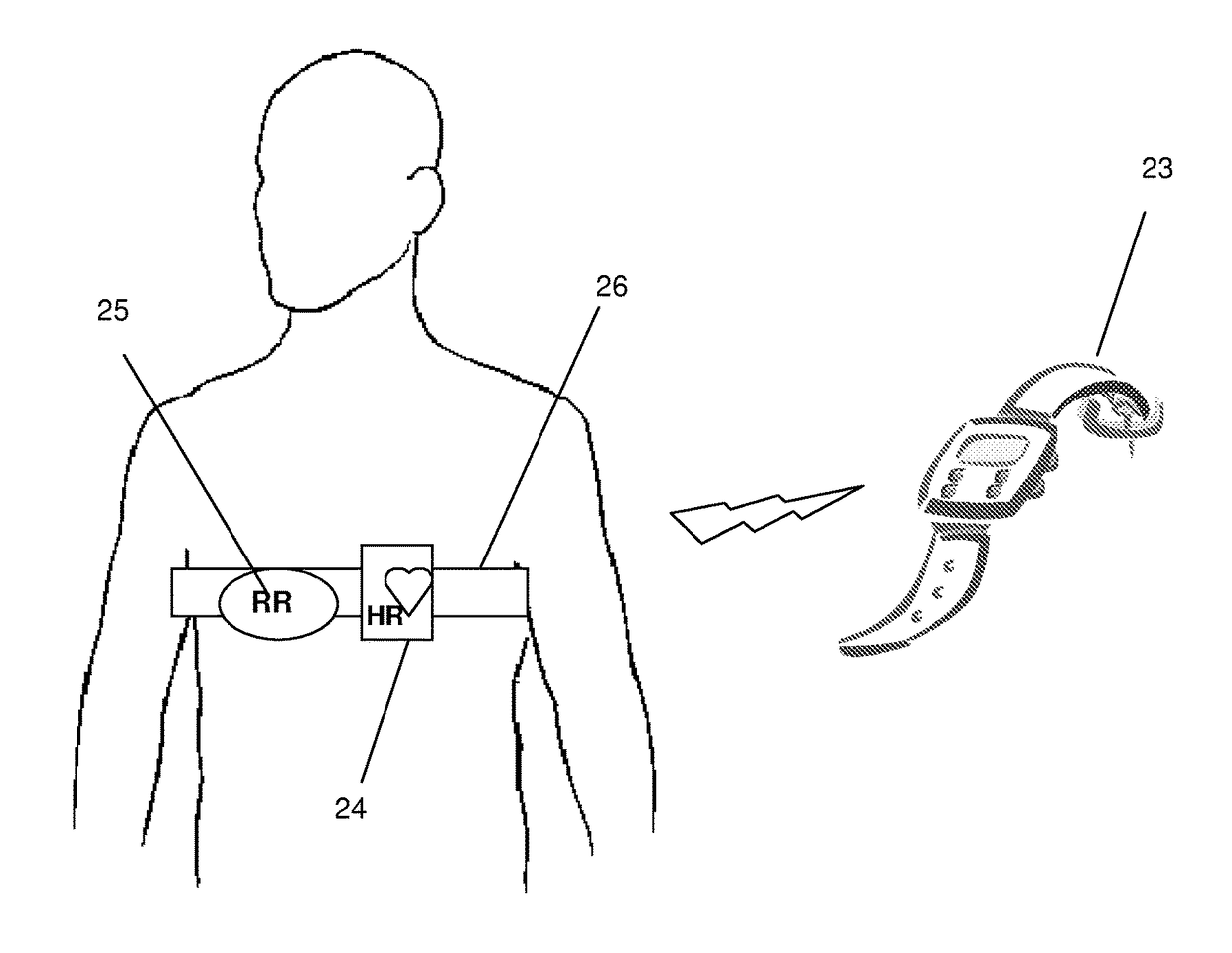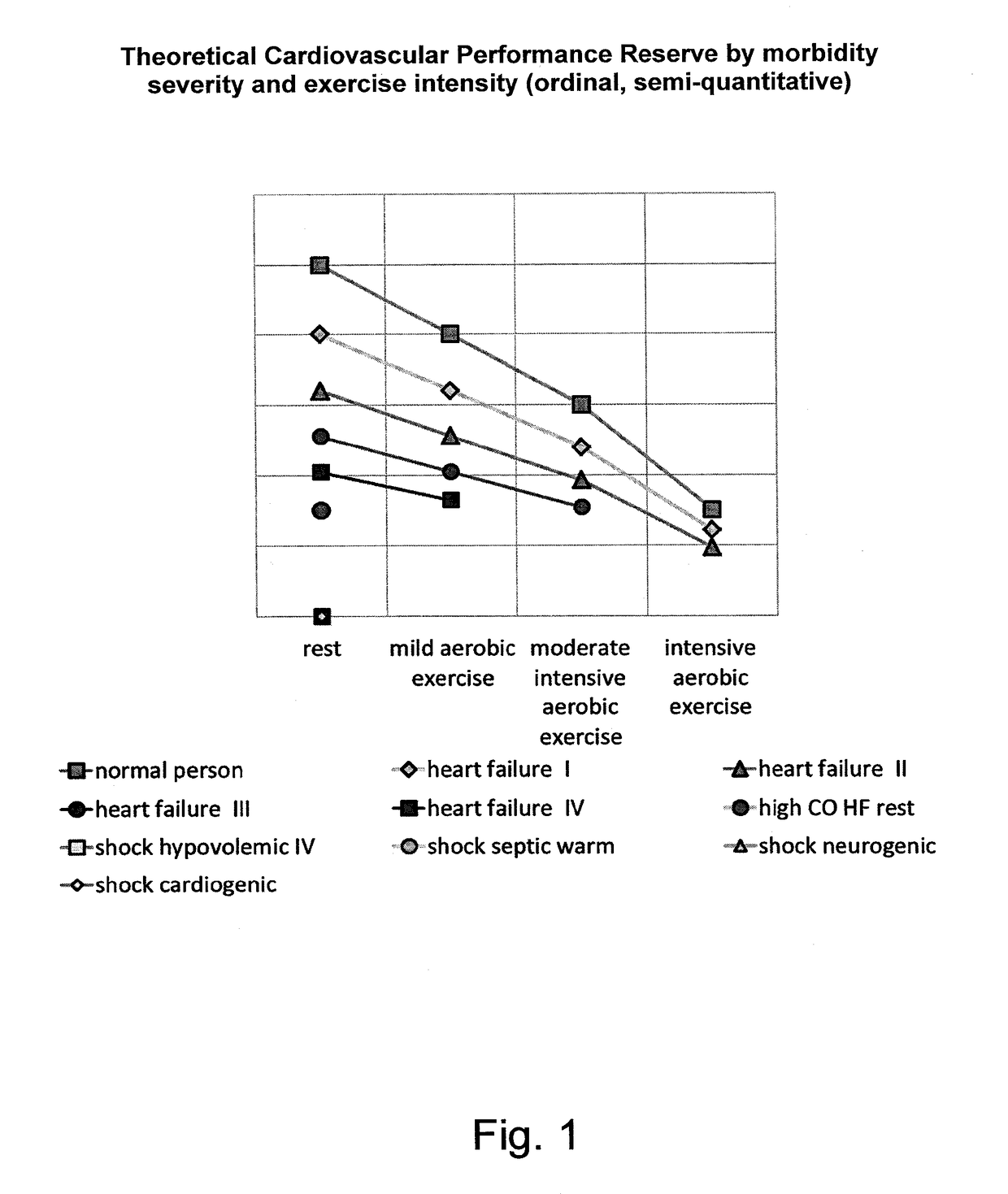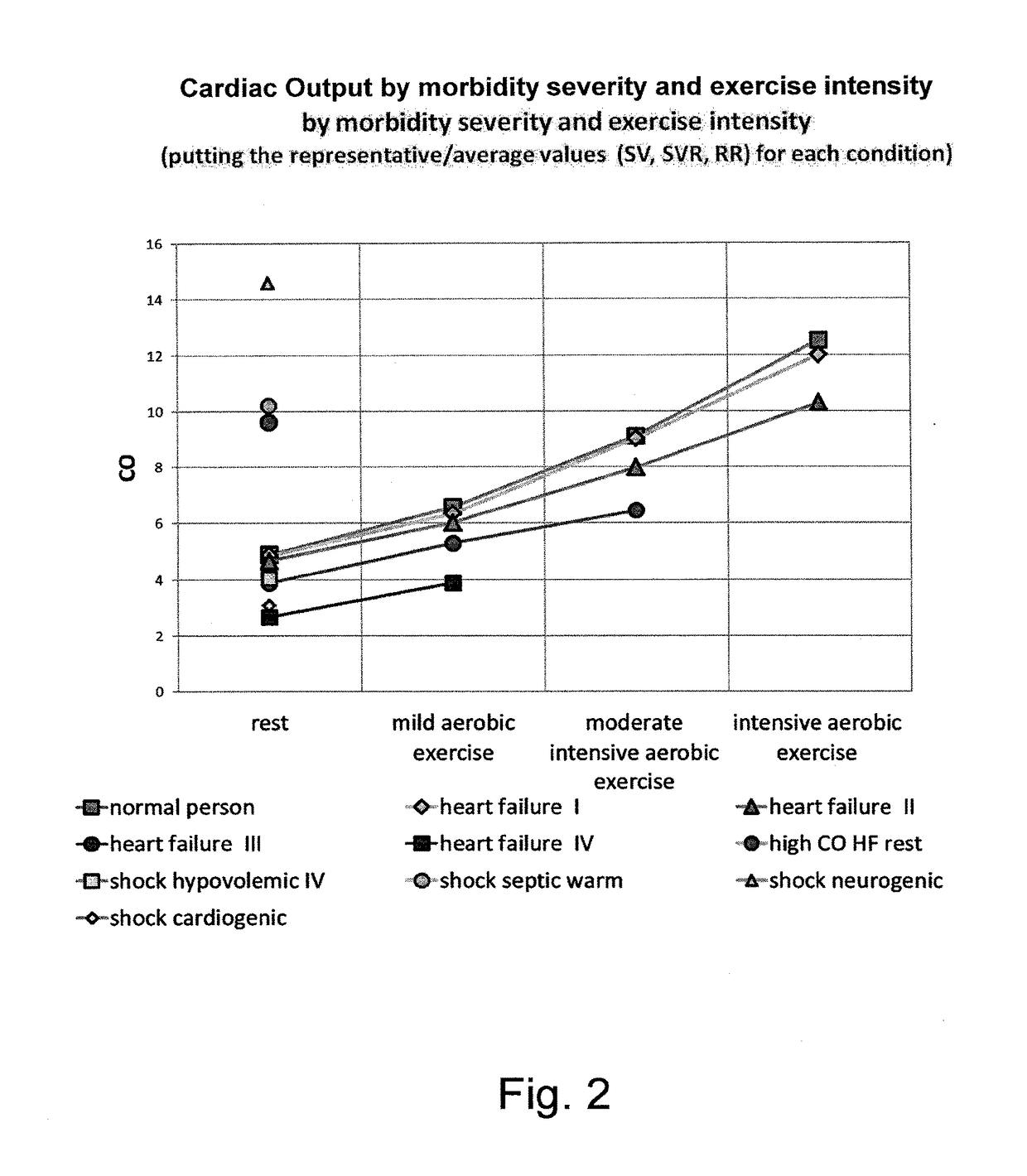Method and system for estimating momentary cardiovascular performance reserve
a momentary cardiovascular performance and reserve technology, applied in the field of medical diagnostics, can solve the problems of shock, lack of satisfactory single diagnostic test or quantitative measure, complex, costly and risky, and demand out-trip the amount of circulation
- Summary
- Abstract
- Description
- Claims
- Application Information
AI Technical Summary
Benefits of technology
Problems solved by technology
Method used
Image
Examples
example 1
SV and SVR Measurements are Available
[0098]The following is an exemplary method for determining an index for a patient based on SV, SVR, RR and BSA as of formula (6) according to an embodiment of the present invention. The method begins by receiving (or recording depending upon the implementation) the data from an individual that are required to obtain the following parameters: the SV, SVR, RR and BSA. The data from the individual can be measured or obtained by different types of existing healthcare medical devices, or alternatively by a dedicated device configured to measure such data either directly or through indirect estimation and accordingly to calculate the CVRI. The index for the individual is calculated by taking the product SV*SVR divided by RR, BSA and 4 to obtain CVRI a number representing the cardio vascular performance diagnostic and severity estimation capabilities.
example 2
SV and SVR are Unavailable but Vital Signs are Available
[0099]The following is an exemplary method for determining an index for a patient based on MABP, CVP, HR, RR and BSA, as of formulas 7, 8, 9, 10, 11 according to an embodiment of the present invention. The method begins by receiving (or recording depending upon the implementation) the data from an individual that are required to obtain the following parameters: the Arterial Blood Pressure, HR, RR and BSA. The data from the individual can be measured or obtained by different types of existing healthcare medical devices, or alternatively by a dedicated device configured to measure such data and accordingly to calculate the CVRI. The index for the individual is calculated by taking the difference (MABP−CVP) or its estimate as in formulas 7, 8, 9, 10, 11 multiply by 20, divided by the HR, RR and BSA to obtain CVRI a number representing the cardio vascular performance reserve which carries diagnostic and severity estimation capabili...
PUM
 Login to View More
Login to View More Abstract
Description
Claims
Application Information
 Login to View More
Login to View More - R&D
- Intellectual Property
- Life Sciences
- Materials
- Tech Scout
- Unparalleled Data Quality
- Higher Quality Content
- 60% Fewer Hallucinations
Browse by: Latest US Patents, China's latest patents, Technical Efficacy Thesaurus, Application Domain, Technology Topic, Popular Technical Reports.
© 2025 PatSnap. All rights reserved.Legal|Privacy policy|Modern Slavery Act Transparency Statement|Sitemap|About US| Contact US: help@patsnap.com



